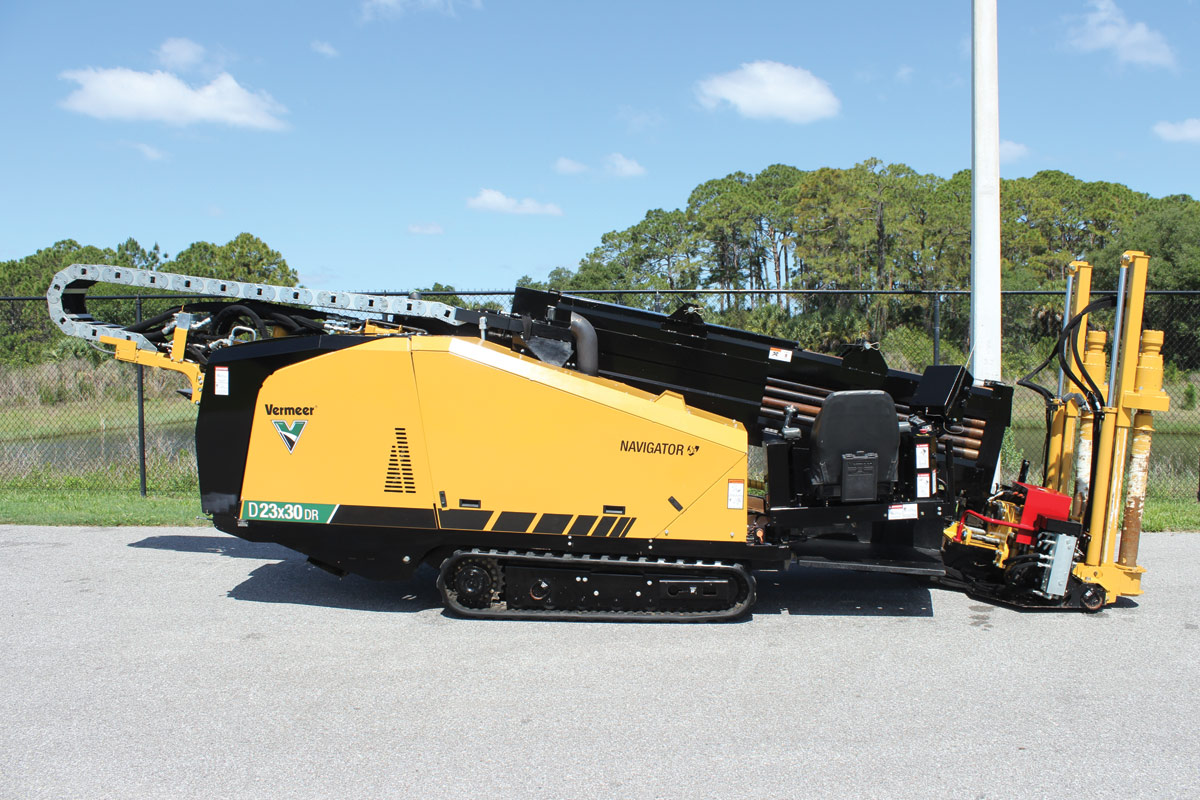Trenchless Student Profiles
December 1, 2008
As part of our focus on the trenchless engineering segment of the market, we thought it would be beneficial to see the perspective of the industry from those still in school, studying trenchless technology as part of their curriculum. We contacted various trenchless programs around the United States to submit a student for this section. The programs represented are Bowling Green State University, Arizona State University and Louisiana Tech University. Adam Kolwicz
Adam Kolwicz
Bowling Green State University; Construction Management; 2008
1. What sparked your interest in studying trenchless technology?
AK: Alan Atalah’s Trenchless Technology class and his enthusiasm whenever speaking about the subject of trenchless technology.
2. What areas of trenchless study most interest you?
AK: Microtunneling and boring because of the machinery and engineering behind the concept of not disturbing the public’s access.
3. What types of trenchless technology activities have you been involved with outside the classroom?
AK: I have attended seminars and various jobsites performing trenchless technology.
4. How has participating in trenchless-related organizations helped to prepare you for a career in trenchless technology?
AK: Networking and better knowledge of different ways on performing certain tasks.
5. What can colleges/universities do to enhance their trenchless educational programs to attract more students?
AK: Demonstrations and seminars held at the universities.
6. In what capacity do you see yourself working in the trenchless industry? What is your career goal?
AK: I see myself in the near future being a superintendent or project manager in the replacement of utilities by using trenchless technologies.
7. What role do you see trenchless technology playing in the future development of underground infrastructure construction and rehabilitation?
AK: Trenchless technology will play a huge role in the rehabilitation of our deteriorating infrastructure, with less costs and less disruption to the public.
 Arnab Ghosh
Arnab Ghosh
Arizona State University; Master’s in Construction Management; 2008
1. What sparked your interest in studying trenchless technology?
AG: Trenchless technology has always been an area of interest to me. The interest to learn became even stronger when I joined the master’s program at Arizona State University. The more I learned, the more I wanted to learn about the technologies used. The curiosity became even stronger when I went to various jobsites to see projects in progress and the benefit and advantages trenchless has to offer.
2. What areas of trenchless study most interest you?
AG: Horizontal directional drilling, CIPP lining and tunneling are the areas that interest me the most. I feel that these fields really test the engineer’s imagination and skills, and since the areas are so specialized, much can be achieved without any disturbance to normal human activities.
3. How important is it for you to have participated in a trenchless internship/co-op program?
AG: The internship/co-op program has helped me immensely in getting to better understand the various trenchless technologies. Theoretically, trenchless technology is just installation or rehabilitation of underground utility lines; however, the field experience gave me an exact idea as to how the complex procedure of installing and repairing of pipelines can be achieved.
4. How has participating in trenchless-related organizations helped to prepare you for a career in trenchless technology?
AG: Participating in trenchless-related organizations such as the ASU-NASTT Student Chapter has helped me a lot and made me decide that trenchless technology was to be my career path. Participating in the organization has helped me network with people who are in the field of trenchless technology and definitely helped me make my decision with regard to my career goals and aspirations.
5. What can colleges/universities do to enhance their trenchless educational programs to attract more students?
AG: I think students who are not too familiar with trenchless technology should be taken to jobsites and taught more about the field so as to let them know what advantages the technology beholds and how it can help society.
6. In what capacity do you see yourself working in the trenchless industry? What is your career goal?
AG: Currently, I work for Insituform Technologies as a project manager in India. My career goal is to be in the trenchless industry and help in the growth of this technology in the years to come.
7. What role do you see trenchless technology playing in the future development of underground infrastructure construction and rehabilitation?
AG: Trenchless technology is an emerging field that has been accepted as the method of construction and rehabilitation of underground utilities. The role that trenchless technology plays is very vital for the development of any country where urbanization is fast. It has a very bright future and I see myself to be a part of it for years to come.
 John Matthews
John Matthews
Louisiana Tech University; Ph.D. in Engineering; 4th Year in the Ph.D. Program
1. What sparked your interest in studying in trenchless technology?
JM: By attending the 2003 No-Dig Show in Las Vegas, and working the following summer as a resident inspector for MWH in New Orleans.
2. How important is it for you to have participated in a trenchless internship/co-op program?
JM: It is always important to have practical experience to go along with the theoretical background you get in school, which creates a valuable educational experience. When I was a resident inspector for MWH, I was able to observe several different trenchless applications, such as CIPP, sliplining and pipe bursting. Being in the field, observing the contractors, I was able to gain a better understanding of everything that is actually involved in the use of trenchless methods for sewer rehabilitation.
3. How has participating in trenchless-related organizations helped to prepare you for a career in trenchless technology?
JM: The organizations, such as NASTT, have given me a great place to network with industry professionals, as well as students from other universities. They also provide a great place to learn about trenchless technology and its developments and improvements.
4. What can colleges/universities do to enhance their trenchless educational programs to attract more students?
JM: At Louisiana Tech, we have the Trenchless Technology Center (TTC) where the graduate students get to focus on trenchless technology with their research. We also offer courses that focus on trenchless technology and that use trenchless examples for teaching engineering theories. One way to attract more students to the trenchless programs is to have more industry involvement on campuses, such as demonstrations and seminars, as well as student involvement in more industry shows such as NASTT’s No-Dig.
5. In what capacity do you see yourself working in the trenchless industry? What is your career goal?
JM: I would like to work for a company that promotes the use of trenchless technology and advances the development of trenchless technology through research and development. I would also like to teach at the university level and stay involved with new and exciting research in the trenchless field.
6. What role do you see trenchless technology playing in the future development of underground infrastructure construction and rehabilitation?
J.M: I see it being used more and more as the underground space becomes more occupied with utilities creating the need for cost-effective methods that take into account social and environmental impacts.
 Marcan Wilfred Masudi
Marcan Wilfred Masudi
Bowling Green State University; College of Technology; Master’s Degree in Industrial Technology — Construction Management and Technology.
1. How has participating in trenchless-related organizations helped to prepare you for a career in trenchless technology?
MWM: My participation in many trenchless workshops and conferences has opened my way of thinking as it pertains to effective management of underground utility services. With a background in construction engineering, the knowledge in trenchless technology will be of much value on my daily decisions on utility installation techniques and effective management of site activities.
2. What can colleges/universities do to enhance their trenchless educational programs to attract more students?
MWM: The colleges and universities can do the following to enhance educational programs in trenchless technology: promote partnerships with trenchless technology contractors and professionals in order to ensure that students get practical experience in trenchless technology; develop trenchless technology chapters in higher learning institutions that would champion the interest of students; make trenchless technology materials available to students; and encourage students to attend trenchless technology workshops and conferences.
3. In what capacity do you see yourself working in the trenchless industry?
MWM: I would like to work as a field construction engineer responsible for daily coordination and ensuring the project is constructed in accordance with the design and specifications. Participation in pipe bursting and pilot tube auger boring will be my major interest.
4. What role do you see trenchless technology playing in the future development of underground infrastructure construction and rehabilitation?
MWM: With the current high rate of awareness in trenchless technology through NASTT and other related societies, many countries are expected to be informed of technlogy application in the modern world, especially within the urban environments. Underground infrastructures will start receiving more attention, including additional funding. Improved efficiency in wastewater management and other related underground infrastructures are likely to enhance the country’s economic growth and promote a healthy nation where wastewater problems are minimized.
Tags: NASTT Student Chapter

 Adam Kolwicz
Adam Kolwicz Arnab Ghosh
Arnab Ghosh John Matthews
John Matthews Marcan Wilfred Masudi
Marcan Wilfred Masudi


